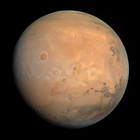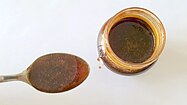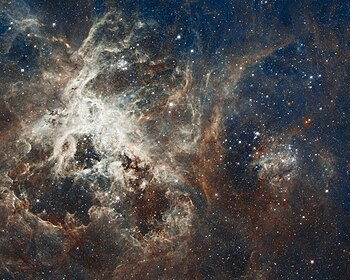User:JrandWP
|
I am fancy of DYKs and the process of updating queues. I like translating pages (to Vietnamese). My main wiki is viwiki, which I have contributed a lot here.
My links:
Wikipedia's featured positions[edit]
Featured article[edit]
Mars is the fourth planet from the Sun. It was formed approximately 4.5 billion years ago, is a terrestrial planet and is the second smallest of the Solar System's planets with a diameter of 6,779 km (4,212 mi). A Martian solar day (sol) is 24.5 hours and a Martian solar year is 1.88 Earth years (687 Earth days). Mars has two small and irregular natural satellites: Phobos and Deimos. Carbon dioxide is substantially present in Mars's polar ice caps and thin atmosphere. It has the highest mountain in the solar system, Olympus Mons, and the largest canyon, Valles Marineris. There are large annual temperature swings on the surface, between −78.5 °C (−109.3 °F) and 5.7 °C (42.3 °F) – similar to Earth's seasons. Due to its geological history, the possibility of past or present life on Mars remains of great scientific interest. Mars has been explored by uncrewed spacecraft and rovers, and is an attractive target for future human exploration missions. (This article is part of a featured topic: Solar System.)
Did you know...[edit]
- ... that hallucinogenic honey (pictured) was used as a biological weapon more than 2000 years ago?
- ... that after failing to qualify for prestigious races as an athlete, Mounir Akbache became a rabbit?
- ... that the memorial Ivančena was created to honor members of the Silesian Scout Resistance who were executed for their part in the resistance to Nazi occupation during World War II?
- ... that Lewis W. Green was one of the two members of the first graduating class of Centre College and later became its president?
- ... that "Toy Town" was said to have "almost destroyed" the happy hardcore scene?
- ... that nearly a thousand elections for local executives were held in Indonesia between 2005 and 2013, with an average of around one every three days?
- ... that although Agnes Kimball was a popular recording artist of opera and musical theatre, she never appeared as a singing actress on the stage?
- ... that 287 Broadway was once called "the most succulent cast-iron street-show in all New York"?
Picture of the day[edit]
Tip of the day[edit]
The Wikipedia Adventure Badges[edit]




